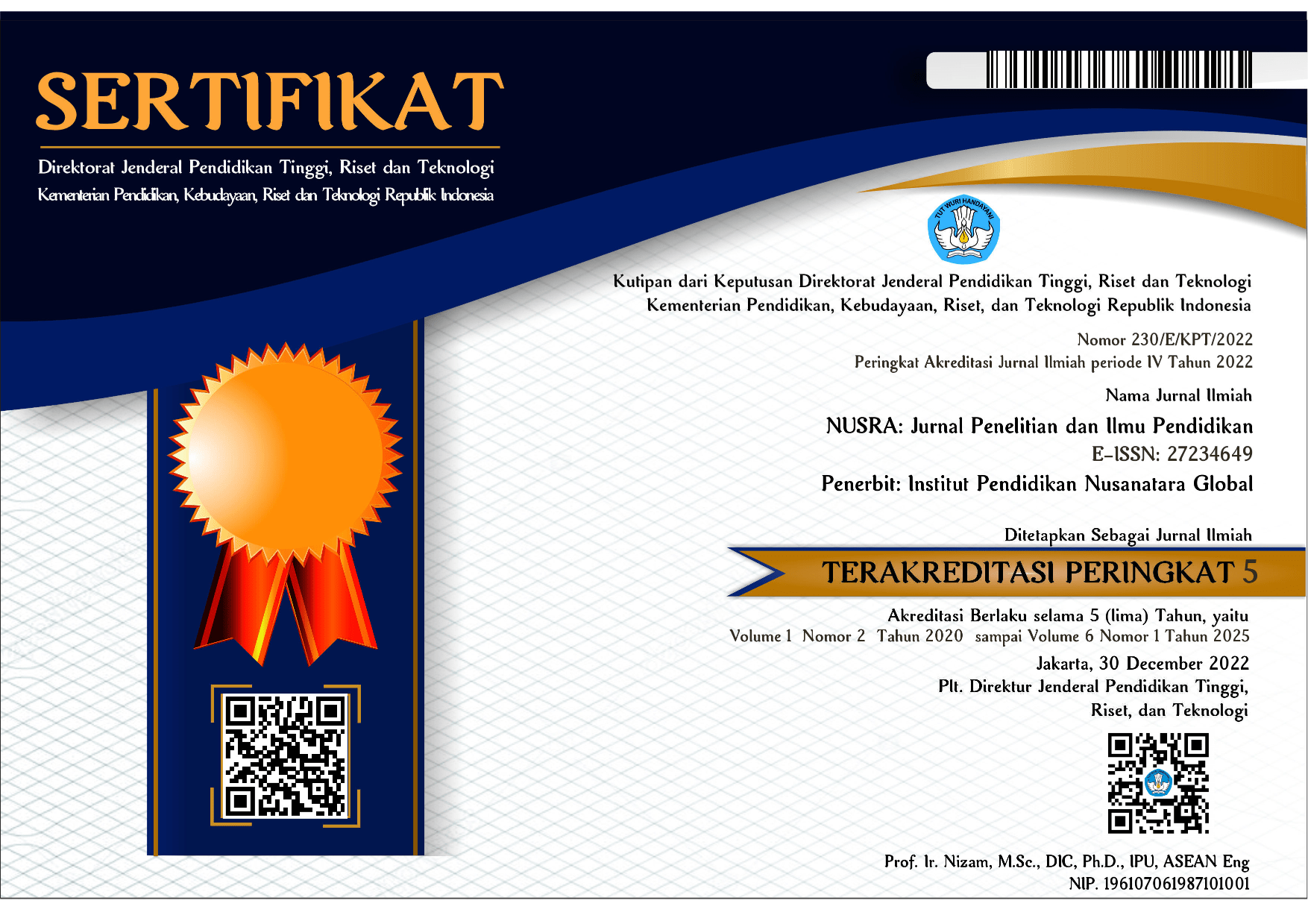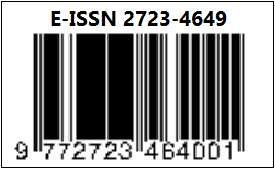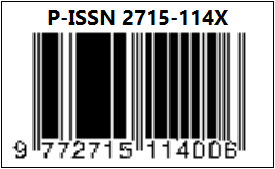Analisis Kemampuan Pemecahan Masalah Peserta Didik Kelas IV SD Negeri Tawang Mas 01 dalam Menyelesaikan Soal Cerita Materi Diagram Batang Berdasarkan Gaya Belajar
DOI:
https://doi.org/10.55681/nusra.v5i3.3138Keywords:
Learning Style, Problem Solving Ability, Mathematics ProblemAbstract
This research aims to describe and determine students' abilities in solving mathematical problems with a focus on learning styles. The research subjects were Class IV students at SD Negeri Tawangmas. This research is a qualitative descriptive study which aims to determine and describe mathematical problem solving abilities in terms of students' learning styles. Data was collected using questionnaires, tests and interviews. The use of questionnaires describes visual learning styles, auditory and kinesthetic learning styles. Two test numbers determine the mathematical problem solving ability in the Polya step, and the interview confirms the mathematical problem solving ability. The data analysis techniques are reduction, presentation and verification. Based on the results, this study had 7 respondents with a bias towards visual style 3, auditory style 2 and kinestatic style with literacy skills from the results of the report cards, the average report card score was 76.28 and the standard deviation was 17.03. With problem-solving abilities for each style, namely 1) students with a visual style have the ability to understand problems, organize and carry out them and re-check the results of their work. 2) students with an auditory style have the ability to understand problems, organize and carry out them and review the results of their work. 3) students with an auditory style have the ability to understand problems, organize them, and are unable to carry them out until they are unable to recheck the results of their work.
Downloads
References
Astutiani, R., Isnarto, & Hidayat, I. (2019). Mathematics Problem Solving Ability in Solving Story Problems based on Polya’s Steps. Mathematics Education Journal, 1(1), 110–117. https://doi.org/https://doi.org/10.22219/mej.v1i1.4550
Azizah, U. N. (2019). Profil Kemampuan Literasi Matematika Siswa Ditinjau dari Gaya Belajar. Jurnal Inovasi Pembelajaran Matematika (JIPM), 1(1), 11–18. https://doi.org/https://doi.org/10.36379/jipm.v1i1.32
Cahyani, I. S. (2015). The Importance of Recognizing Students’ Learning Styles in Learning Activities.
Chislett, V. M., & Chapman, A. (2005). VAK test questionnaire. Www.Businessballs.Com, 1- 5.
Domu, I. (2023). Student Learning Styles in Solving Math Story Problems on the Material of Two-Variable Linear Equation Systems. Journal on Education, 6(1), 2072–2082. https://doi.org/10.31004/joe.v6i1.3200
Fennell, F. S., & Rowan, T. (2015). Principles and Standards Representation: An Important Process for Teaching. January 2001. Https://Doi.Org/10.5951/TCM.7.5.0288.
Hutabarat, H., Elindra, R., & Harahap, M. S. (2022). Analysis of the Implementation of Merdeka Belajar Curriculum in State Senior High Schools in Padangsidimpuan City. MathEdu Journal (Mathematic Education Journal), 5(3), 58–69. http://journal.ipts.ac.id/index.php.
Mashuri, H., & Hendikawati, N. D. (2018). The mathematical problem solving on learning with Thinking Aloud Pair Problem Solving (TAPPS) model in term of student learning style The mathematical problem solving ability of student on learning with Thinking Aloud Pair Problem Solving (TAPPS) model in. Unnes Journal of Mathematics Education, 7(1), 1–7. https://doi.org/10.15294/ujme.v7i1.18870
Ningsih, S. (2014). Realistic Mathematics Education: Model Alternatif Pembelajaran Matematika Sekolah. Jurnal Pendidikan Matematika, 1(2), 73–94.
Oktasya, I., Turmuzi, M., & Setiawan, H. (2022). Analysis of Problem Solving Ability of Mathematics Story Problems of Grade V Students of SDN 01 Tempos. Scientific Journal of Education Profession, 7(2), 351–353. https://doi.org/https://doi.org/10.29303/jipp.v7i2.495
Siagian, M. D. (2016). Kemampuan Koneksi Matematik dalam Pembelajaran Matematika. MES: Journal of Mathematics Education and Science, 2(1), 58–67. https://doi.org/https://doi.org/10.30743/mes.v2i1.117
Supraptinah, U. (2015). Eksperimentasi Model Pembelajaran Discovery Learning, Problem Based Learning, dan Think-Talk-Write dengan Pendekatan Saintifik terhadap Kemampuan Pemecahan Masalah Matematika Materi Lingkaran Ditinjau dari Kemandirian Belajar Siswa Kelas VIII SMP Negeri S. UNS.
Yeni, E. M. (2015). Kesulitan belajar matematika di sekolah dasar. JUPENDAS (Jurnal Pendidikan Dasar), 2(2), 1–10.
Downloads
Published
How to Cite
Issue
Section
License
Copyright (c) 2024 Yuni Kurniatin, Agnita Siska Pramasdyahsari, Anis Susilowati, Noviana Dini Rahmawati

This work is licensed under a Creative Commons Attribution-ShareAlike 4.0 International License.














